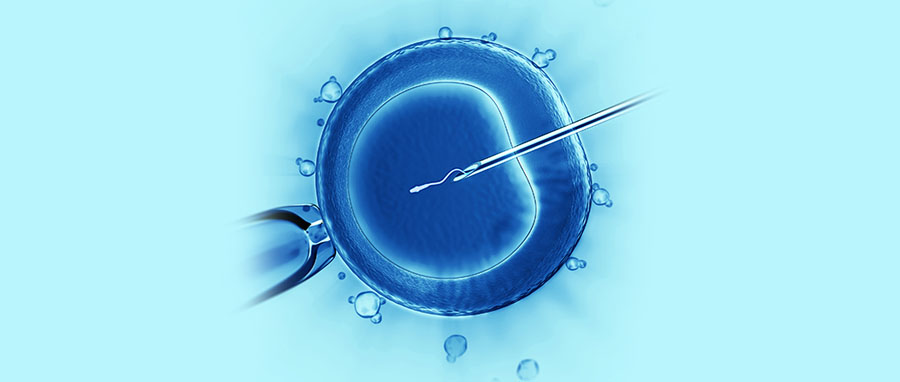
ICSI has revolutionized the treatment of male infertility. Before the first successful ICSI pregnancy in 1992, little could be offered to couples with severe male-factor infertility, aside from using donor sperm. The procedure began as a laboratory accident where a sperm was infused directly into the egg. The first four trials of the procedure were successful, and healthy embryos emerged, and pregnancy was confirmed. The high success rates made the procedure popular across the world. It entails taking sperms from a male which are then injected into an egg.
What is ICSI?
Intra-cytoplasmic sperm injection (ICSI) is one of the most successful procedures to treat male infertility. It is used in more than 50% of the IVF treatment. ICSI is an excellent option for individuals who are suffering from infertility, and they have very few sperms to fertilize an egg. In ICSI one sperm and one egg is used to generate an embryo.
How does ICSI work?
Before ICSI is carried out, there are a set of procedures conducted on a male and a female. ICSI is carried out even if the sperm count is zero (azoospermia), and also in cases where there are low sperm count or there are blockages in the reproductive organ.
PESA is carried out which is the least complex procedure and can be used if the sperms are present in your epididymis (a tube connected to the testicle and important for sperm transport and maturation). A needle is inserted into your epididymis and sperm is withdrawn.
When there are no sperms found in the epididymis TESA is carried out which is a slightly complex procedure where the sperms are directly extracted from the testicles using a needle.
TESE is used if no sperms are found using PESA or TESA. This is performed under general anaesthetic, and the testicle is opened and examined under a high powered operating microscope. The best areas of tissue within the testicle that are likely to contain sperm is searched. These are extracted and examined by an embryologist until a sperm is found.
While for women, the mature eggs are retrieved from the female partner during a standard IVF cycle. She has to undertake medication to stimulate her ovaries to produce more eggs.
The male partner’s semen sample is prepared in the lab by separating the various other components, and only healthy moving sperms are selected. The mature egg is then made ready to receive the sperm. A highly specialized instrument is used to hold the egg in place, after which a very fine sharp needle is used to pick up a single sperm. With great accuracy, the needle is inserted into the egg, injecting the sperm slowly into the egg and the needle is removed, leaving the sperm behind.
The injected eggs are placed in an incubator overnight and checked for cell division and see if they have formed an embryo. A healthy embryo is selected and placed into the uterus of the women just as it is done in the case of the usual IVF procedure.
Process of getting an ICSI
The couple will have to undergo a myriad of preliminary tests, to check the quality of eggs, sperm, uterus, which is done by your gynaecologist / IVF specialist
Further tests will be required to check the sperm and its chances of conception; the wife also undergoes a blood test and vaginal ultrasound scan
The entire process takes about 3-6 weeks however the ICSI take only a day to complete, and the couple is asked to come back for the embryo transfer which occurs 2-6 days later.
Who will benefit from the treatment?
- Males who suffer from infertility will benefit from the treatment
- In the cases of couples who do not prefer insemination of donor sperms
- It can also be applicable in cases where sperms are not moving as expected.
- It is also a preferable choice when sperms have an abnormal shape.
- The procedure is also beneficial for males who have problems with ejaculating or erections.
- Individuals who have undergone vasectomy will require the procedure as they cannot ejaculate sperms.
- It can also help in cases where the male has a low libido.
- Previous IVF attempts have failed
- Essentially, it applies in cases where the sperm cannot get to the egg, or for some reason, it has been unable to go through the outer layer of the egg.
- The number of eggs for egg retrieval is very low. When ICSI is used in such a case, a larger number of eggs can get fertilized, as compared to the usual insemination done by mixing the sperm and the eggs
- When the woman has a low ovarian reserve
Cautions when comparing clinics
Males who want the procedure have to be cautious about the fertility clinic they choose. This arises from the complex nature of the procedure and the costs involved. You should be careful to choose a facility with all the right equipment, and a medical professional who has a high success rate with other patients. This will ensure that the procedure leads to the desired outcomes. This will also minimize the risks that might arise when you go through the procedure. Essentially, it is wise to pick a hospital that will minimize the risks.
Why us?
ShrikhandeIVF is an ideal place to get an ICSI treatment. Since it has a team of experienced and expert embryologists that carry out the procedure in the most advanced way with the help of the latest equipment’s. Also since we are involved in research, and are constantly making efforts to improve the practice to benefit our patients. Our team has an experience of more than 30 years, and we are constantly on our toes to maximize the success rate for our infertile couples.




 (+91) 880 557 7600
(+91) 880 557 7600
 Abhyankar Road, Dhantoli, NAGPUR-12
Abhyankar Road, Dhantoli, NAGPUR-12





